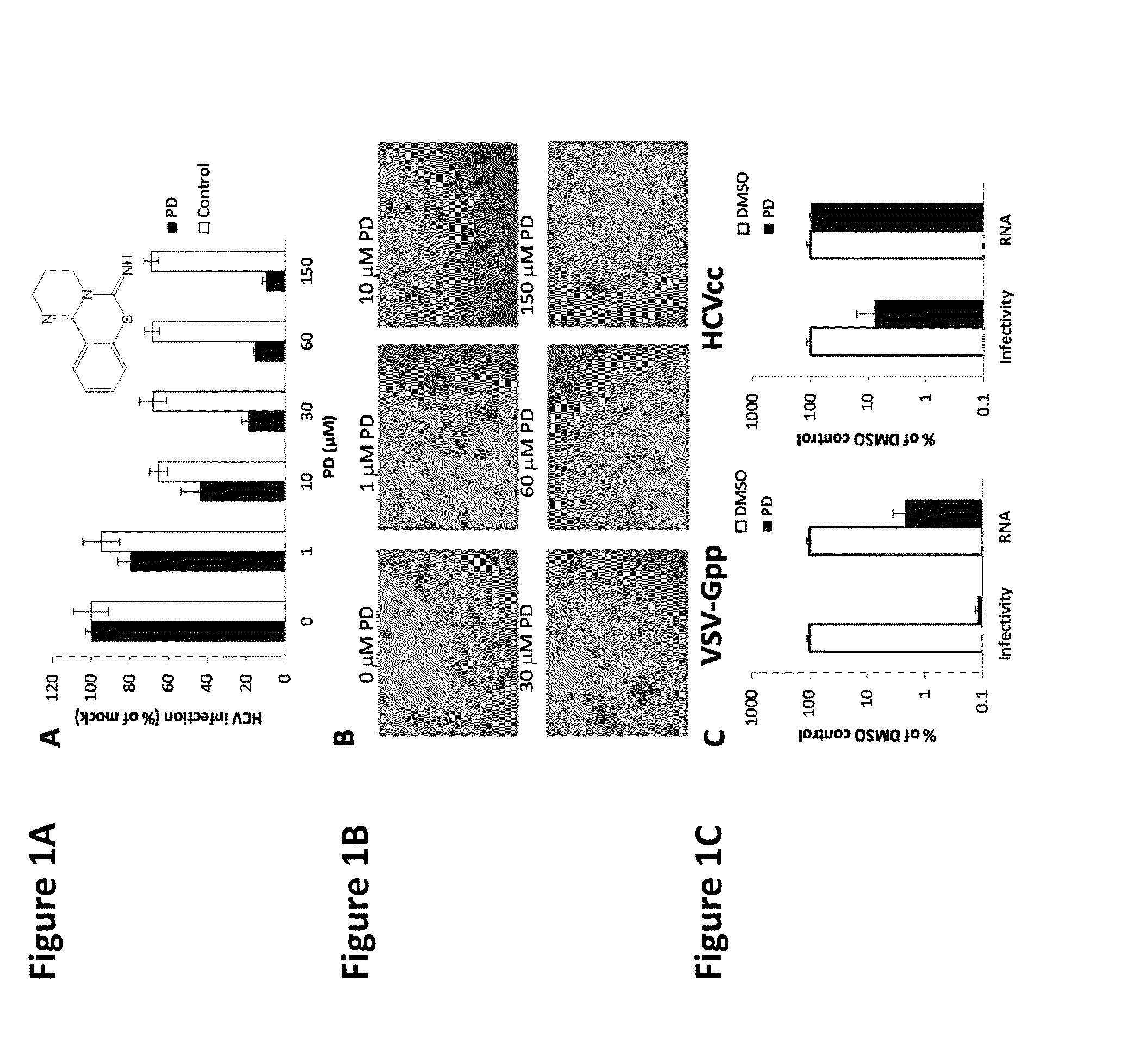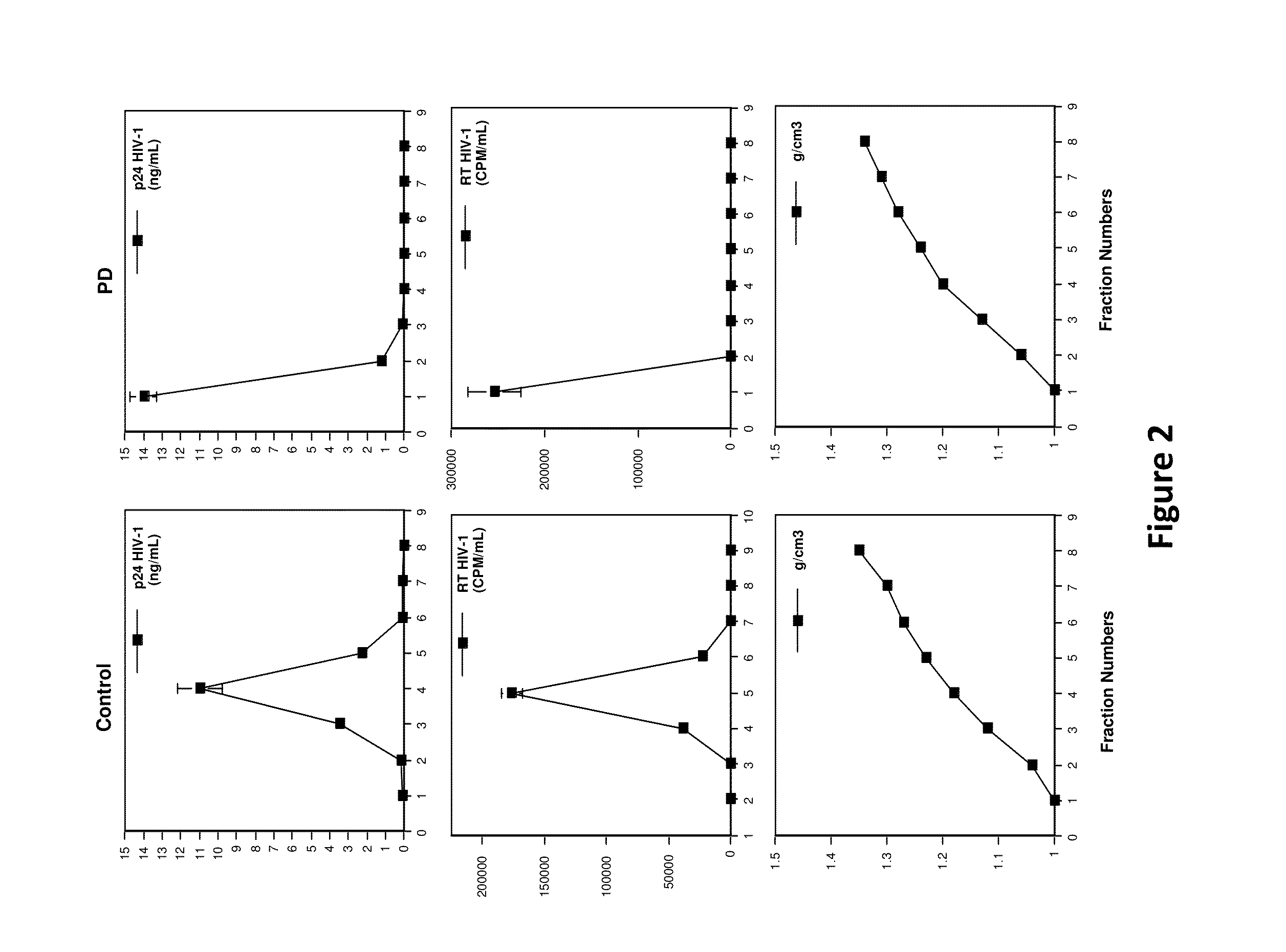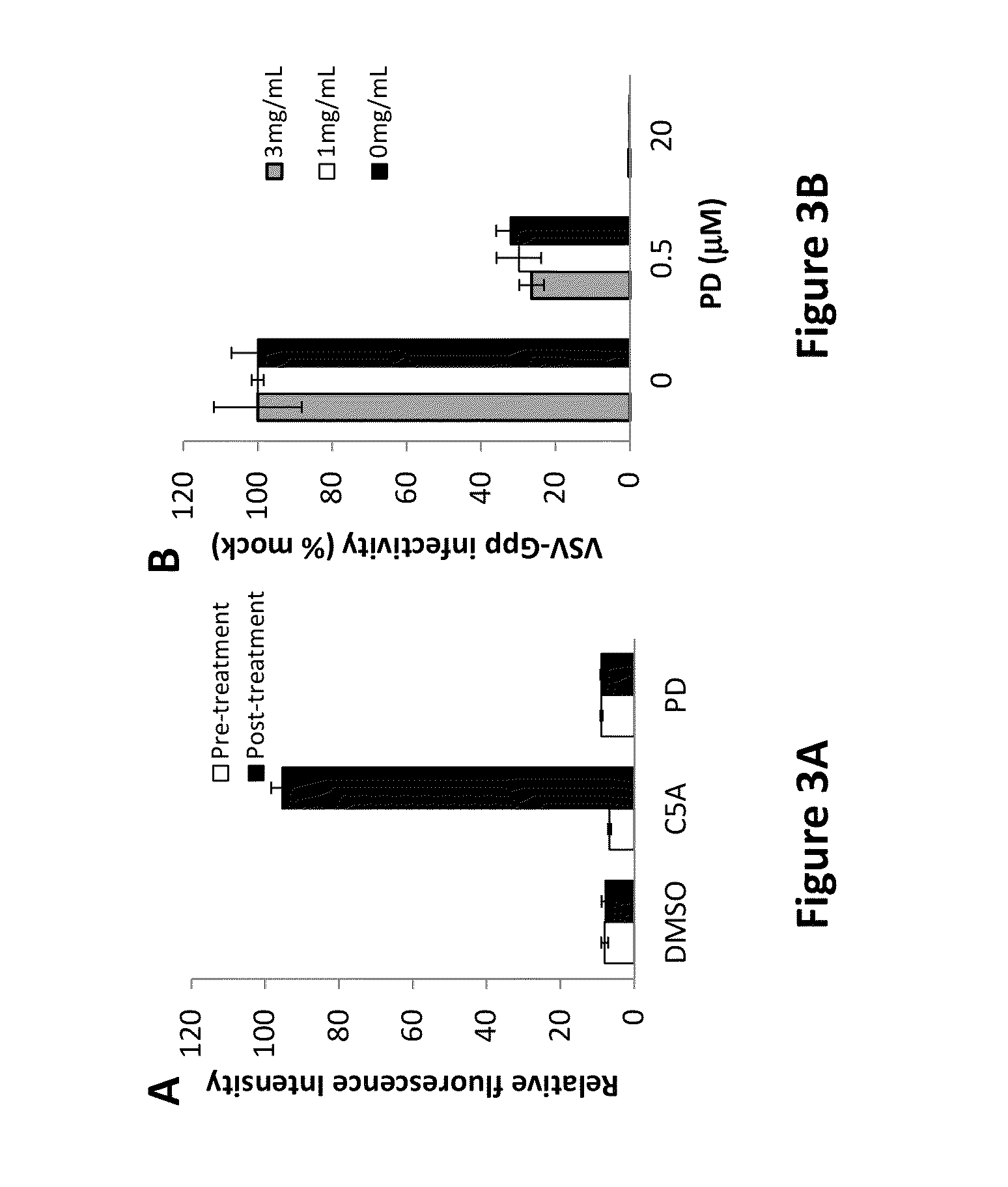Virucidal small molecule and uses thereof
a small molecule and virus technology, applied in the field of virus-associated small molecules, can solve the problems of limited efficacy of therapies, invivo pose serious health problems, and often exhibit limited efficacy of therapeutics, and achieve the effects of slowing the global spread of hiv, preventing the transmission of dendritic cell-associated hiv-1, and reducing the risk of infection
- Summary
- Abstract
- Description
- Claims
- Application Information
AI Technical Summary
Benefits of technology
Problems solved by technology
Method used
Image
Examples
example 1
Reagents
[0070]PD 404,182 and Triton X-100 were purchased from Sigma-Aldrich (St. Louis, Mo.). PD 404, 182 is identified by CAS Number 72596-74-8, PubChem Substance ID 24278629, and has the empirical formula C11H11N3S and has the following chemical structure:
[0071]PD was dissolved in DMSO to a final concentration of 30 mM-40 mM, aliquoted and stored at −20° C. C5A was synthesized at the Scripps Research Institute. C5A was dissolved in 100% DMSO to final concentrations of 10 mg / mL, respectively, and stored at −20° C. Dulbecco's Phosphate-Buffered Saline (DPBS) and Penicillin-Streptomycin (pen-strep) were purchased from Thermo Scientific HyClone (Logan, Utah) and Lonza (Walkersville. MD), respectively. Unless otherwise stated, the complete growth media for all cell culture work was DMEM containing 4500 mg / L glucose, 4.0 mM L-Glutamine, and 110 mg / L sodium pyruvate (Thermo Scientific HyClone, Logan, Utah) supplemented with 10% fetal bovine serum (Atlanta Biologicals, Lawrenceville, Ga.)...
example 2
Production of HCVcc and Pseudotyped Lentiviruses
[0073]Production and titering of Jc1 HCVcc was as previously described. Unless otherwise specified, all lentiviral pseudoparticles were generated from 293T cells by co-transfection of plasmids carrying HIV gag-pol, a provirus (pTRIP-Gluc, pV1-Gluc or pV1-B), and an appropriate envelope protein. For example, pseudotyped lentiviruses were produced by co-transfecting 293T cells with plasmids carrying HIV gag-pol, a provirus (pV1-B1) or pTRIP-Gluc, and vesicular stomatitis virus glycoprotein (VSV-G). TransIT reagent (Mirus, Madison, Wis.) was used to perform the transfection following the manufacturer's protocol. The supernatants containing the pseudoparticles were collected 48 h post transfection, filtered (0.45 μm pore size) and stored at −80° C. until use.
[0074]For production of MLVpp, SINVpp, and HIVpp, plasmids encoding the viral envelope proteins pHIT456, pintron-SINV-env, and HIV BaL.01 were used, respectively. pV1 is a minimal HIV-...
example 3
PD Stability
[0075]PD was diluted in buffered DPBS (pH 4, 6, 8, 10) or cervical fluids (pool of 3 donors, 5-fold diluted in DPBS) to achieve a final concentration of 30 μM. DPBS was buffered to the desired pH using hydrochloric acid or sodium hydroxide. Cervical fluids were collected and processed as previously described. Diluted drug was incubated at the desired temperature for 0, 24 or 48 h. After the temperature incubation, the drug mixture was further diluted to 1, 0.1 and 0.05 μM in complete growth media and used to incubate with VSV-G lentiviral pseudo particles (VSV-Gpp; viral supernatant diluted 500-fold in complete growth medium) at 37° C. for 30 minutes. Huh-7.5 (2×104 cells / well) seeded 24 h earlier were inoculated with the PD-treated virus at 4° C. for 2 h, thoroughly washed to remove unbound viruses and drug, replenished with complete growth media containing 1× pen-strep and returned to 37° C. and 5% CO2. Viral infectivity was quantified 48 hours later by measuring super...
PUM
| Property | Measurement | Unit |
|---|---|---|
| Temperature | aaaaa | aaaaa |
| Temperature | aaaaa | aaaaa |
| Transmission | aaaaa | aaaaa |
Abstract
Description
Claims
Application Information
 Login to view more
Login to view more - R&D Engineer
- R&D Manager
- IP Professional
- Industry Leading Data Capabilities
- Powerful AI technology
- Patent DNA Extraction
Browse by: Latest US Patents, China's latest patents, Technical Efficacy Thesaurus, Application Domain, Technology Topic.
© 2024 PatSnap. All rights reserved.Legal|Privacy policy|Modern Slavery Act Transparency Statement|Sitemap



